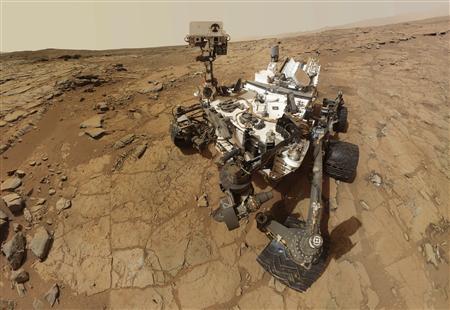CAPE CANAVERAL, Fla., March 18 – The Mars rover Curiosity has had a second computer glitch, extending an unplanned work break for the NASA robot that discovered the first life-friendly chemistry beyond Earth, scientists said on Monday.

Engineers had hoped to resume Curiosity science operations on Monday following a problem with the rover’s main computer two weeks ago.
But a second computer problem surfaced on Sunday night as the rover was attempting to radio data files back to Earth, said lead scientist John Grotzinger of the California Institute of Technology.
“This is not something that is rare or even uncommon,” Grotzinger said at a webcast news conference during the Lunar and Planetary Science Conference in Houston.
The problem, however, is expected to keep Curiosity’s next batch of science results on hold for a few more days, Grotzinger told Reuters.
Before the glitch, the rover had radioed back to Earth its first analysis of rock samples drilled from the inside of slab of bedrock in the rover’s Gale Crater landing site.
The rover touched down on August 6 to learn if the planet most like Earth has or ever had the chemical ingredients to support microbial life. The early results, announced last week, were a definitive yes.
Scientists also announced additional evidence on Monday that Curiosity is located in an area once flush with water, a key ingredient for life.
Infrared images and an instrument that fires neutrons into the ground to probe for hydrogen detected minerals that form in water near the mudstone that Curiosity drilled and chemically analyzed.
The rover’s camera and its Russian-made neutron probe found more evidence for water in the so-called Yellowknife Bay area, where the rover is presently located, than at sites studied earlier in the mission.
“I see the difference between Yellowknife and the area which is just before Yellowknife … showing the different distribution of water. This is a significant variation,” Maxim Litvak of the Space Research Institute in Moscow told reporters.
The rover is seven months into a planned two-year, $2.5 billion mission at Gale Crater, a giant impact basin located near the Martian equator. Scientists eventually want to explore a 3-mile (5-km) mountain of what appears to be layered sediments rising from the crater floor.
(Editing by Jane Sutton and Cynthia Osterman)





